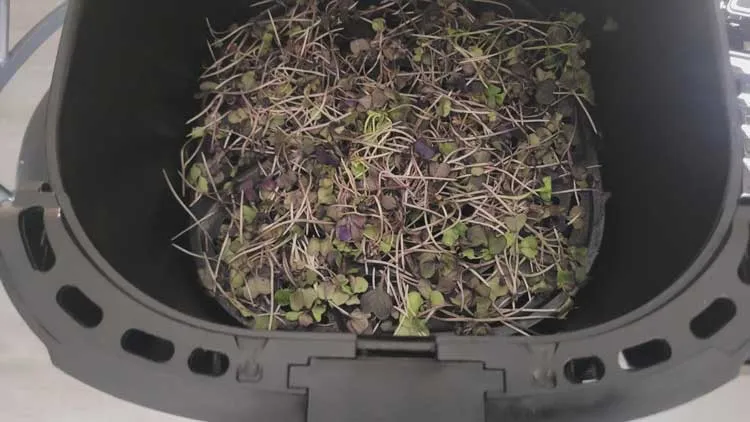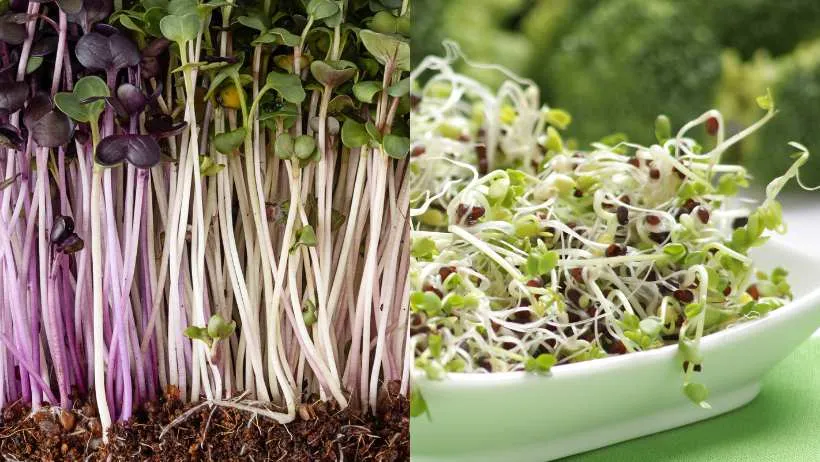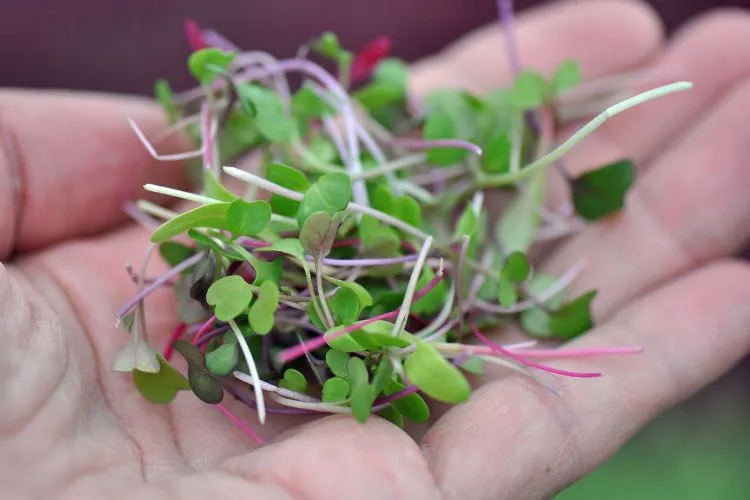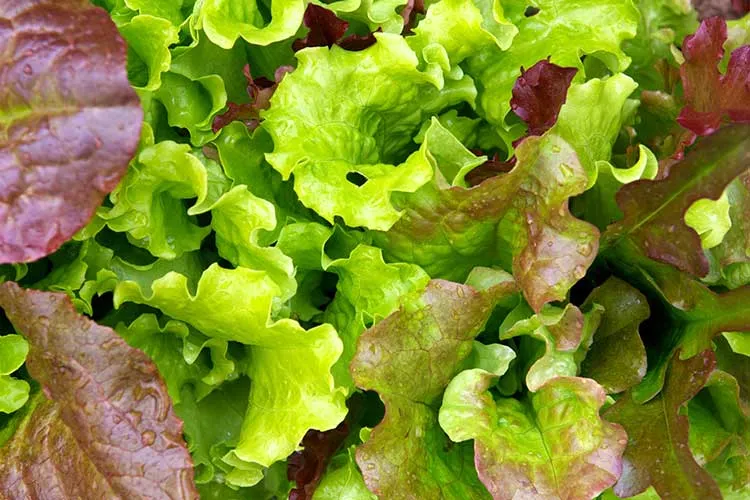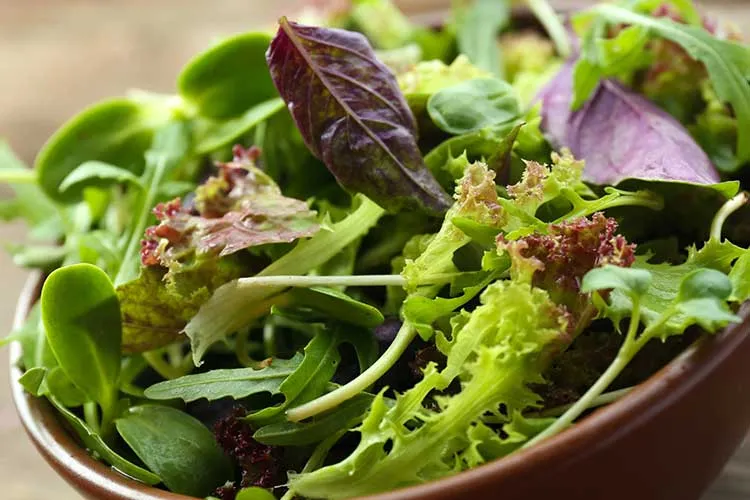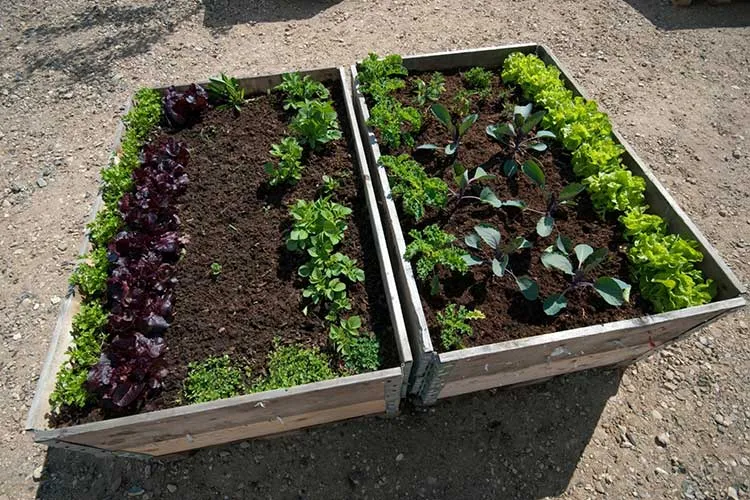Can dehydrated microgreens retain their nutrients? It’s the million-dollar question every microgreen lover asks when faced with the convenience of drying their greens. We all want our little leafy superheroes to stay packed with vitamins, but dehydration can feel like robbing them of their powers. Fear not! This guide will investigate how dehydration affects microgreens and whether you can keep their nutrient-dense goodness intact. Spoiler: It’s not all doom and gloom—if you do it right, you can still get a good crunch without losing all the benefits!
Can Dehydrated Microgreens Retain Their Nutrients?
This is a big question, as dehydrated microgreens can retain some nutrients, but the extent depends on the dehydration method. Nutrients like fiber and minerals generally remain intact, while heat-sensitive vitamins like C and B tend to degrade. Choosing methods like freeze-drying can preserve more nutrients compared to air drying or oven drying, effectively minimizing nutrient loss.
Understanding the Dehydration Process and Its Effects on Foods
Dehydration removes water from food, helping prevent spoilage and extending shelf life. For microgreens, this means using various methods like air drying, convection drying, or freeze drying to get rid of moisture while keeping as many nutrients as possible.
Moisture isn’t the only thing that can disappear—nutrients can also be lost. Heat and exposure to air can cause vitamins like C and B to break down. Proper air circulation during drying helps, but if you over-dry or use high temperatures, you could end up with microgreens that have lost much of their nutritional value. Curious how to dehydrate without a dehydrator? Check out this guide for simple methods to dehydrate at home.
How Dehydration Affects Microgreens Specifically
When you dehydrate microgreens, some nutrients hold up better than others. Vitamins, especially C and B, are the first to take a hit from heat. The drying process can break them down quickly. On the flip side, minerals and fiber are more resilient.
They tend to stick around, even after the drying process. The key to keeping vitamins intact is to control the drying method and temperature. Want to know the difference between air drying and oven drying? Here’s a detailed comparison to help you decide which method is best.
Different Dehydration Methods for Microgreens
Picking the right way to dehydrate microgreens depends on your goals—nutrient retention, cost, and convenience. Let’s break down the most common methods and see how they compare.
Air Drying
Air Drying Microgreens is the classic method, similar to drying herbs at home. It’s cheap and energy-free but can take days to complete. The downside? The longer your microgreens are exposed to air and light, the more nutrients they lose, especially vitamins like C and B. This method can also lead to inconsistent results—some parts dry perfectly, others get mushy or moldy.
Convection Drying speeds things up by circulating warm air around the microgreens. It’s faster than air drying, reducing the time nutrients are exposed to air and heat, but if the temperature gets too high, those vitamins can take a hit. The key is to keep the heat low and steady. This method is popular because most people already have a convection oven at home, making it a convenient option.
Freeze Drying
Freeze drying is the gold standard for preserving nutrients. This method freezes the microgreens first and then uses a vacuum to remove moisture. It keeps almost all the nutrients intact, and the flavor and texture stay pretty close to fresh. The downside? Freeze-drying requires specialized (and often expensive) equipment, so while it’s the best for nutrient retention, it’s not the most accessible method.
Solar Drying
Solar Drying uses the sun to dehydrate microgreens. It’s cost-effective and energy-efficient but can be inconsistent depending on the weather. It’s slower than other methods, which increases the risk of nutrient loss, especially for light-sensitive vitamins. However, it’s an environmentally friendly option if you live in a sunny area and have time.
Regarding practicality and nutrient retention, using a dehydrator specifically for leafy greens offers a great balance. You get controlled temperatures and faster drying times, preserving more nutrients than air drying but without the complexity or cost of freeze-drying. If nutrient preservation is your top priority and budget isn’t a concern, freeze-drying is the winner. If you’re more focused on convenience, speed, or cost, a good-quality dehydrator or convection drying will get the job done.
Nutrient Loss and Retention During Dehydration
Not all nutrients react the same to heat. Water-soluble vitamins like C and B are the most sensitive, with much of their content disappearing during drying. However, fiber, calcium, and iron hold up much better.
These tougher nutrients stay fairly stable, even when exposed to heat. The temperature at which you dehydrate microgreens plays a big role—high heat speeds up the loss of vitamins, while lower temperatures can help preserve more. The longer and hotter the drying process, the more nutrients you’ll lose.
How to Maximize Nutrient Retention in Dehydrated Microgreens
If you want to preserve as many nutrients as possible, lower heat is the way to go. Low-temperature dehydration helps preserve sensitive vitamins like C. Quick drying times also help, as shorter exposure to heat means less time for the nutrients to break down.
At home, your best bet is a dehydrator with adjustable temperature settings. Aim for temperatures between 95°F and 115°F. Once your microgreens are dried, store them in airtight containers in a cool, dark place to prevent them from losing any more nutrients. Small changes in your drying and storage techniques can make a big difference.
Comparison of Dehydrated Microgreens with Fresh and Frozen Alternatives
How do dehydrated microgreens measure up to fresh and frozen ones? Fresh microgreens are packed with vitamins, antioxidants, and enzymes. However, their short shelf life can make them tricky to store. Frozen microgreens, especially if freeze-dried, retain almost all their nutritional value, making them the next best option.
Dehydrated microgreens lose some vitamin C during drying, but they’re still rich in minerals and fiber. If you’re looking for long-term storage and convenience, dehydrated microgreens are a good option, even if they’re not quite as nutrient-packed as their fresh or frozen counterparts.
Practical Applications and Uses for Dehydrated Microgreens
Even though dehydrated microgreens lose some vitamins, they’re still a versatile addition to your diet. You can easily add dried microgreen powder to smoothies, soups, or sauces for an extra boost of nutrients.
They also work well as a topping for salads, pasta, or even a garnish on avocado toast. Dehydrated microgreens last much longer than fresh ones, making them ideal for meal prep or long-term storage.
Store microgreens in a sealed container away from light and heat to keep their nutrients intact. Learn more about the benefits of dehydrating microgreens to maximize their potential in your daily diet.
Conclusion: Are Dehydrated Microgreens a Nutritious Option?
Can dehydrated microgreens retain their nutrients? The answer is yes but with some loss. While vitamins like C won’t survive the process, minerals and fiber remain, making dehydrated microgreens a good option for long-term storage and convenience.
They might not be as nutrient-dense as fresh microgreens, but they’re still a great way to add extra nutrition to your meals without worrying about spoilage. Give dehydrating a try at home, and with the right techniques; you can preserve the best of what microgreens offer.
More Microgreen Tips & Insights
Why Are Microgreens So Expensive?
6 Easy Ways to Tell If Your Microgreens Have Gone Bad

